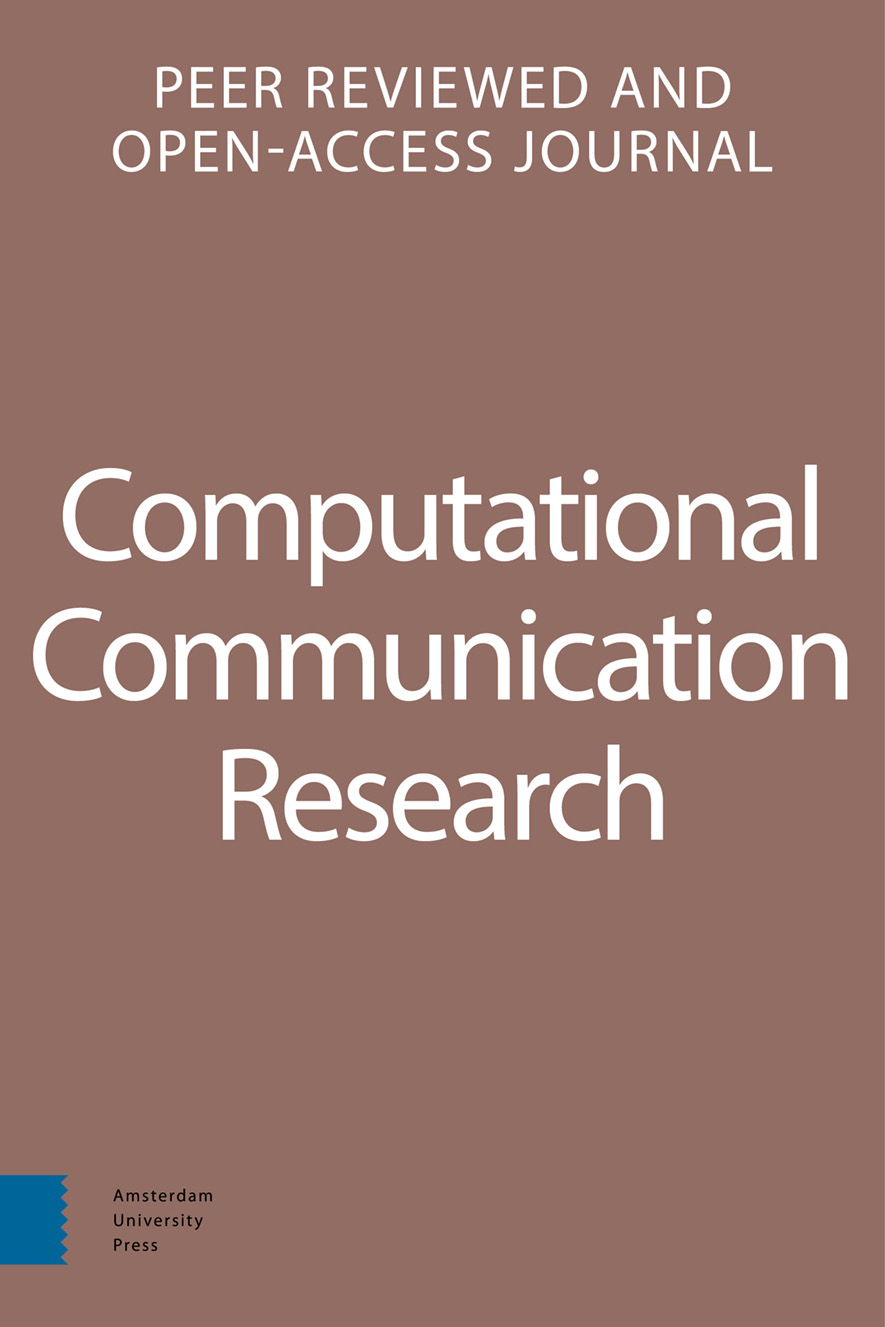- Home
- A-Z Publications
- Computational Communication Research
- Previous Issues
- Volume 2, Issue 2, 2020
Computational Communication Research - Volume 2, Issue 2, 2020
Volume 2, Issue 2, 2020
-
-
How Document Sampling and Vocabulary Pruning Affect the Results of Topic Models
More LessAuthors: Daniel Maier, Andreas Niekler, Gregor Wiedemann & Daniela StoltenbergAbstractTopic modeling enables researchers to explore large document corpora. Large corpora, however, can be extremely costly to model in terms of time and computing resources. In order to circumvent this problem, two techniques have been suggested: (1) to model random document samples, and (2) to prune the vocabulary of the corpus. Although frequently applied, there has been no systematic inquiry into how the application of these techniques affects the respective models. Using three empirical corpora with different characteristics (news articles, websites, and Tweets), we systematically investigated how different sample sizes and pruning affect the resulting topic models in comparison to models of the full corpora. Our inquiry provides evidence that both techniques are viable tools that will likely not impair the resulting model. Sample-based topic models closely resemble corpus-based models if the sample size is large enough (> 10,000 documents). Moreover, extensive pruning does not compromise the quality of the resultant topics.
-
-
-
Who Says What with Whom
More LessAuthors: Kenneth Joseph, Ryan J. Gallagher & Brooke Foucault WellesAbstractSocial media protest networks involve many participants, from long-time activists to individuals who are engaged only in a particular protest event. We propose a new approach to studying how various communities of users participate in protest events. Our approach combines two methodological innovations. First, rather than study tweets central to one event, we collect full timelines of user activity leading up to participation in a focal event. Second, we propose bi-spectral clustering as a scalable computational method for rapidly identifying communities of users by the words (hashtags) they use. Using a large sample of tweets from users who discussed the 2016 protests in Charlotte, North Carolina following the extrajudicial killing of Keith Lamont Scott as a case study, we demonstrate how bi-spectral clustering can be applied to sort, sample, and identify ideologically and thematically coherent clusters whose members participated in the protest on Twitter. Our proposed approach provides another tool in the mixed methods scholar’s toolkit to computationally sort and cluster large-scale network data by allowing researchers to look beyond focal hashtags or keywords and situate protest messages within the broader communication context of participating users.
-
-
-
To Whom Do Politicians Talk and Listen?
More LessAbstractPoliticians use social media platforms such as Twitter to connect with the public. However, it remains largely unknown who constitutes the public sphere to whom politicians actually connect, talk, and listen. Focusing on the Twitter network of all Swiss MPs, I identified 129,063 Twitter users with whom politicians connected (i.e., their follower–followee network) or with whom they interacted (e.g., [were] replied to or retweeted). I qualitatively analyzed top connected, talking, and listening MPs, and conducted a semi-automated content analysis of the Twitter users to classify them (N = 70.589). Politicians’ audience consists primarily of ordinary citizens, who also react most often to the politicians’ messages. However, politicians listen more often to actors close to politics and the media than to ordinary citizens. Thus, politicians navigate between engaging with everyone without losing control over the communication situation and address key multipliers such journalist to get their messages out.
-
-
-
The State and Evolution of Communication Research
More LessAbstractTremendous growth in the communication discipline during the past century has raised fundamental questions about what it means to study human communication. This project reports an attempt at answering such questions by exploring the themes that animate communication scholarship over time and across journals sponsored by different scholarly organizations. We used topic modeling to examine the abstracts of more than 20,000 articles across 22 journals from their beginnings through 2015. The results offer insights about the state and evolution of communication scholarship. Research has evolved from being predominately focused on pedagogy to examining a wide variety of phenomena that mark an increasingly diverse field. The role of scholarly organizations in contributing to disciplinary fragmentation is considered, as well as the field’s relatively limited focus on underlying and contextually-transcendent processes in favor of specific communication contexts.
-
Most Read This Month

Most Cited Most Cited RSS feed
-
-
Computational observation
Authors: Mario Haim & Angela Nienierza
-
- More Less

